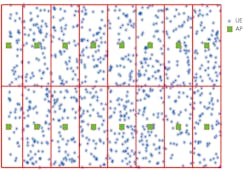Download this article as a .PDF
Interference is undoubtedly a major problem with regard to today’s wireless communications. That being said, one startup company claims to have developed technology for enabling “life without interference.” That company is Austin-based GenXComm, which was founded in 2016 and recently announced the closing of a fully-subscribed round of seed financing.
Earlier this year, GenXComm unveiled its simultaneous self-interference cancellation (S-SIX) technology. This technology is the result of several years of R&D efforts at the University of Texas at Austin. The company is targeting Wi-Fi, backhaul, and 5G markets, with the technology being intended for handsets, tablets, laptops, and more.
With S-SIX technology, the objective is to enable simultaneous transmission and reception of signals—in the same channel. Thus, radios can essentially listen and talk at the same time. In essence, GenXComm believes its technology can enable true full-duplex communications.
S-SIX technology allows channels to be located directly next to one another without any unused spectrum between them. This allows spectrum to be shared more efficiently. Furthermore, the company asserts that significantly lower latencies can be achieved with its technology.
In terms of performance, GenXComm claims that throughput can be increased by as much as 30× in dense environments. “It is very hard to achieve wireless functionality in a dense environment,” said Sriram Vishwanath, the company’s co-founder and president. “Our technology is scalable in dense environments.”
S-SIX technology is intended to satisfy stringent size, weight, and power (SwaP) requirements. The technology is chip-scalable and offers benefits in terms of bandwidth, according to Vishwanath. It also enables physical security.
Quantifying Performance
Figure 1 shows a Wi-Fi network model of a dense indoor environment. Such environments could include conferences, concerts, offices, and home apartments. A total of 16 access points are shown in the model.
Figure 2 shows the modeled performance of the Wi-Fi network depicted in Fig. 1, both with and without S-SIX technology. The graph illustrates the throughput of networks with 100 and 1,000 users, respectively. In both scenarios, it can be seen that employing S-SIX technology significantly increases throughput. Similar simulations of outdoor networks with thousands of users also demonstrated an improvement in throughput when S-SIX technology is employed.
GenXComm expects a full product launch following its next round of funding.



